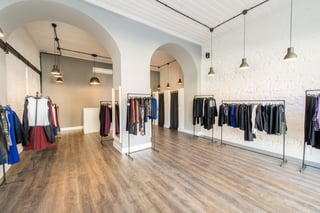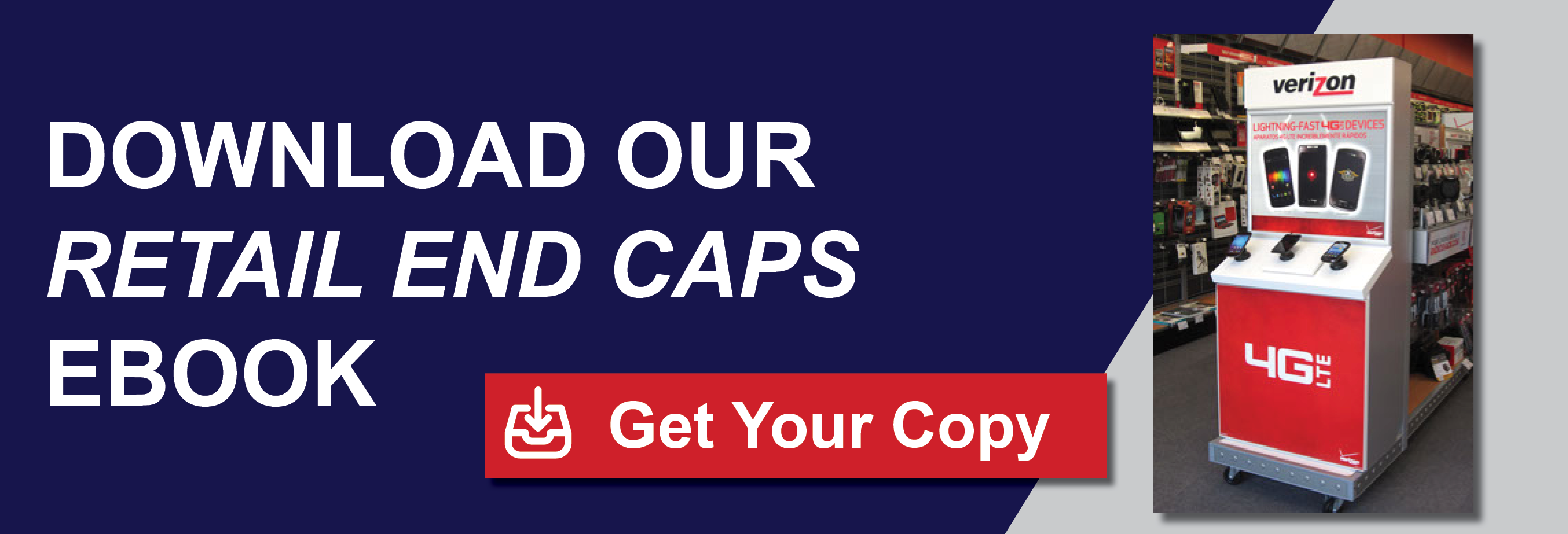Lighting Ideas to Sell More Clothes 
Lighting can do far more than enable customers to make their way around your store. Used correctly, lighting can help you sell more. And the new generation of LED lighting makes it easier than ever. In this third article of our series on tips for clothing stores, we’ll examine how lighting can help you create the kind of ambiance that attracts attention to your store, beckons customers inside, tempts them with wonderful merchandise, and gives them a pleasant shopping experience.
Know Your Light Bulbs
- Incandescent lamps are inexpensive but rapidly going out of style, because they produce heat and are notoriously energy-inefficient.
- Fluorescent tubes or bulbs last longer and are more energy-efficient than incandescents. They can be a good choice for lighting large areas.
- Halogen lamps produce bright light that can be valuable for some applications, but they are less energy-efficient than fluorescent or LED lights.
- Where incandescents are the dinosaurs of retail lighting, LED lights are the precocious up-and-comers. They cost more, but their extreme energy-efficiency, long lifespan, cool temperature, and versatility can generate the kind of ROI that spells increased profitability. When recommending tips for clothing stores, retail experts suggest you switch to LEDs for most applications.
6 Tips for Lighting Clothing Stores
These 6 tips will help you beautifully coordinate the 4 types of lighting – decorative, accent, task and ambient – because each has a specific purpose:
- Start with decorative lighting. When used in window displays, your front entrance and higher up on your walls, this lighting adds a fun or sophisticated element. The point is to reinforce your branding, so be sure the decorative lighting you choose matches your store’s style. LED light boxes can be especially effective, providing decorative lighting that also sells via signage or product posters.
- Use accent lighting to highlight specific displays or items, both in your windows and inside the store. Accent lights can be in-ceiling cans or track-mounted. You can use them under shelves in units that do not have built-in lighting, but be sure these lights are installed so that customers can pick up items without bumping the lights.
- Because accent lighting is usually angled, either upward-facing or downward-facing – depending on the location and type of apparel – it’s important to check from every angle, to be sure the lights aren’t shining into your customer’s eyes. These days, retailers are using more LED downlights than uplights.
- Choose bright light for your entrance and non-display areas where tasks are performed, such as your dressing rooms and cash wrap.
- Think of ambient (general) lighting as “filler.” Once your decorative, accent, and task lighting are in place, you can see if there are any dark spots or the overall light level is too low. Dusky mood lighting might work well for certain restaurants, but it’s not appropriate for clothing stores.
- Choose lighting that matches natural light as closely as possible, so garment colors appear true and details are easy to see. Choose blue lights, though, if you want to emphasize sparkly accessories or eveningwear.
In our final article we’ll have some tips for clothing stores on how you can use signage most effectively.

Palmer Retail Solutions strives to offer our clients the absolute best combination of innovation, quality, service, and value for our diversified custom store fixtures and merchandising displays. For more information about our designs, retail fixtures, cash wraps, kiosks, or point of purchase displays, visit our website at: http://www.palmerretailsolutions.com.
